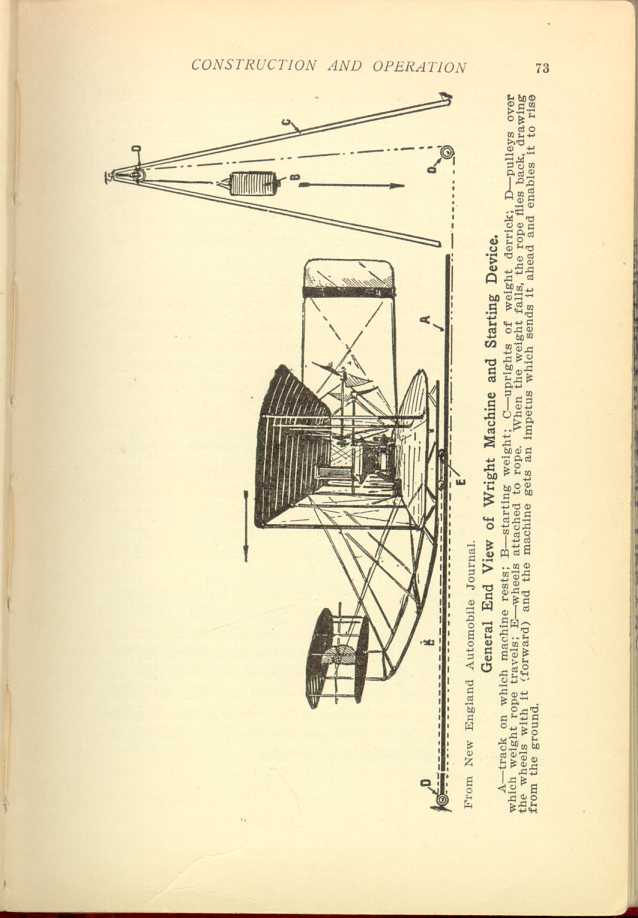Arrangement of Alighting Gear.
Most modern machines are equipped with an alighting gear, which not only serves to protect the machine and aviator from shock or injury in touching the ground, but also aids in getting under headway. All the leading makes, with the exception of the Wright, are furnished with a frame carrying from two to five pneumatic rubber-tired bicycle wheels. In the Curtiss and Voisin machines one wheel is placed in front and two in the rear. In the Bleriot and other prominent machines the
73

From New England Automobile Journal.
General End View of Wright Machine and Starting Device.
A—track on which machine rests; B—starting weight; C—uprights of
weight derrick; D—pulleys over which weight rope travels; E—wheels
attached to rope. When the weight falls, the rope flies back, drawing
the wheels with it (forward) and the machine gets an impetus which
sends it ahead and enables it to rise from the ground.
[Description: Black and white illustration: Diagram of aeroplane and
starting device.]
74
In place of wheels the Wright machine is equipped with a skid-like device consisting of two long beams attached to the lower plane by stanchions and curving up far in front, so as to act as supports to the horizontal rudder.